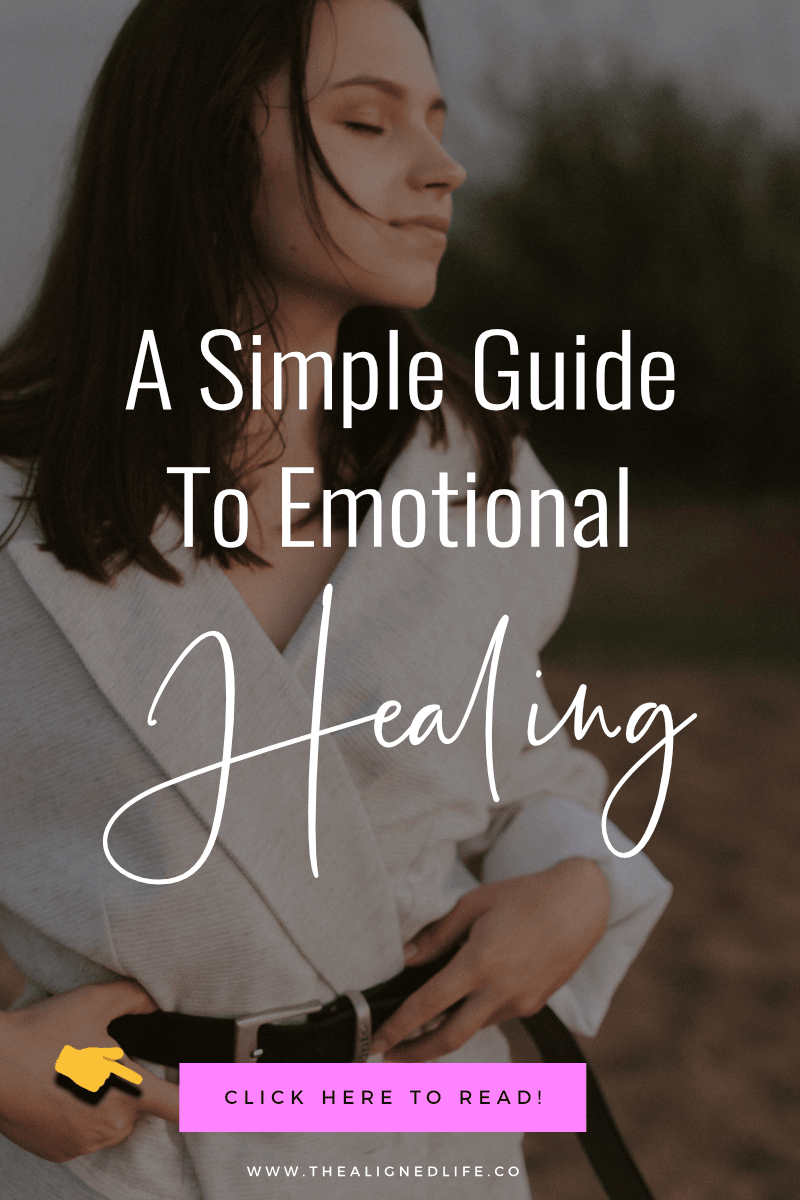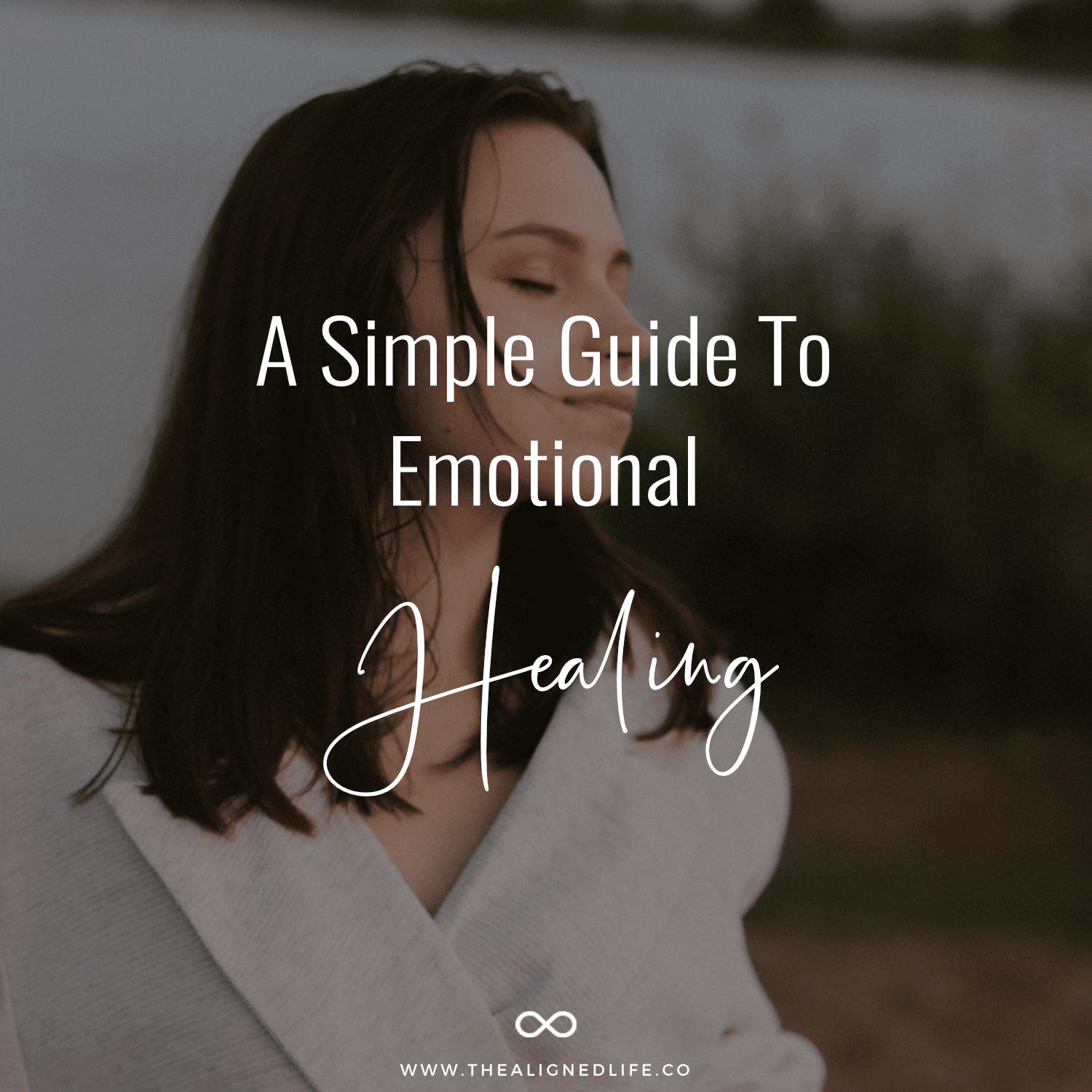A Simple Guide To Emotional Healing
Emotional healing is the process of accepting all our past painful life experiences and the negative emotional reactions they generated.
From my experience, we all need some form of emotional healing! So today I want to give you a simple guide to get started.
Before we get into it, please know there are a lot of different ways that emotional healing can happen. This process goes well beyond the scope of just one blog post.
However, today my aim is to give you a roadmap to move forward. Whether you’re new to this practice or you’ve already done some healing work on yourself, this guide will set you on the right foot.
What Are Emotional Wounds?
Emotional wounds (or Small-T Trauma) are negative events that happened to us in our past which were never fully resolved or healed. Most of the time these wounds come from our primary caregivers (who formed most of our world when we were young). But they can also come from siblings, extended family, classmates, teachers, or society at large.
At some point, we are all hurt emotionally as children. However, most of the time we bounce back and keep on going with no ill effects. Not every hurt will become a wound with long-lasting effects! However, most of us have wounds that we never fully healed from simply because we weren’t allowed to feel those feelings or express ourselves fully at the time.
While you might have learned to ignore or bury the emotions, that’s quite different than healing them. It allows you to live alongside the hurt but doesn’t resolve the original issue.
To make matters worse, those Small-T Traumas can also become bigger than the original event. In an effort to make sense of things, our brains might interpret those events to mean something negative about who we are.
As a result, these wounds create protection mechanisms–which in turn color and shape how we move through the world.
How Emotional Wounds Might Be Affecting You
Emotional wounds might be having a huge impact on your relationships, money, success and so much more–without you ever realizing where the problem is really coming from.
For example, if you learned that you couldn’t be accepted as your true self, you learned how to wear a mask to be more acceptable. But as an adult, you find all of your romantic relationships unfulfilling–not because you don’t deserve love or because all of your partners were terrible. But because you never show them your true self–so of course, your true self can never receive that love it so craves.
Result: moving from relationship to relationship looking for that genuine connection and feeling like you’re simply destined to never find love.
Sound familiar? Ready to start your own emotional healing journey? Here’s a simple 5-step process to get you started.
Emotional Healing In 5 Simple Steps
Emotional Healing Step #1:
Know Your Power
When you were a child, you were very much at the mercy of the world around you. The words and actions of the people in your life were out of your control. Nor were you able to properly advocate for yourself, to set boundaries or to leave toxic situations.
Needless to say, that means that most people experienced something in their childhood that left them feeling limited about who they are or what they can do.
But now you’re an adult! And furthermore, you’re a conscious being who’s interested in shaping the outcomes of their own life.
That means you also get to retroactively heal and reframe any of that negative mind junk that you might have picked up over the years.
But that healing typically doesn’t just happen. You are the only one who can heal yourself and free your mind from these toxic patterns. That means you must take your power back, decide to take action, and do the work to heal and shift.
In other words, staying in victim mode and pointing the finger of blame is a great way to stay powerless. If you want a different outcome, it’s time to take that power back.
Emotional Healing Step #2:
Notice Your Triggers
Sometimes it will be obvious where you need to do some work. (For example, when you get dressed up to go on a date with your partner. But despite your efforts, they don’t compliment you and you’re left feeling completely rejected. Triggered!)
But other times? You might feel triggered and not even be aware of why.
Instead, you might get hysterical or overreact and feel confused about your own actions. That’s because our issues have developed from trauma (which we blocked out) or from repetitive events (instead of one concrete event).
But any trigger offers an important clue. Whenever you notice that familiar sting (think: feeling abandoned, rejected, betrayed, humiliated, or injustice) take note.
While you’re in the moment, it’s usually not the right time to heal. But become curious about your trigger and make a point to come back and do the work later on.
Emotional Healing Step #3:
Find The Core Wound
After you notice your trigger and you have a safe space to do so, turn your attention back in time. What was the first time you remember feeling this way? What are your memories that echo this experience? This will help recall the original (Core) wound.
Again, sometimes you won’t consciously recall what that was. This is one area where hypnotherapy can be useful. While your conscious mind doesn’t remember, your subconscious mind very much does. Being in a hypnotic state can let those “repressed” memories rise back up to the surface.
If you can’t locate something, that’s okay too! Instead, journal on it. Think about what happened now and try to figure out just how far back this feeling went. One good cue is to think about how old you were when you didn’t have this experience.
Emotional Healing Step #4:
Admit What Hurt You
This might seem basic but many of us actually live in permanent denial of what hurt us. Our primary caregivers might have told us we were overreacting or shamed us for “acting like a baby”. It’s pretty common for parents to downplay their children’s emotions instead of holding space for them and healing them. (Hey! Parenting is hard you guys!) But that has led a whole lot of us to downplay our emotions instead of acknowledging them.
If you weren’t comfortable expressing negative emotions as a child, you probably aren’t as an adult either! These things are habits and at this point, avoidance might be wired right into you. However, that doesn’t mean that you don’t have negative emotions. You’ve just gotten so good at hiding them that you might not even be aware of them anymore. Do you habitually overreact? Lash out without understanding why? Get confused by your own emotional reactions? This might have happened to you.
You are allowed to have the full range of human feelings and emotions–both as a child and today. You’re allowed to experience hurt even when it was inconvenient or difficult for others to understand. You’re also allowed to experience hurt over things that didn’t affect those around you. Your own experience is always valid and allowed. Admitting where those hurts came from is the first step to letting them out and healing them.
Emotional Healing Step #5:
Write A New Story
While you received one negative message from your wound experience, it’s time to take control of your narravtive. Whaat would you like to be true for you from here on out?
No matter what happened to you in the past, you get to be exactly who you want to be. You don’t need to let past events dictate your future potential. Your personality is simply a set of habits and underlying beliefs–and you have the power to change all of it.
Think:
You without a fear of abandonment
You without a fear of rejection
You without a fear of betrayal
You without a fear of humiliation
You without a fear of injustice
You were born lovable, worthy, and deeply deserving. What stories are you telling yourself that reflect something otherwise?
To do this, inside Heal’d we do the healing foundation first. From there, you’re able to start programming your mind to reflect the reality that you actually desire.
To do it yourself, try hypnosis or EFT focusing on what you want to be, taking bold action that aligns with what you want, or programming your own mind by focusing your mind and attention on people who have things that are similar to what you want.
So what did you think? Which part of the emotional healing process do you need the most? Did you learn something new about yourself today?
While your past is set in stone, your future is not. If you’re not happy with where you’re at, don’t get stuck in self-blame or self-loathing. Take action and start creating the life you desire, starting from the inside.

Love This Post? Then Save It To Your Manifestation Board On Pinterest!

- Seeing 222 Everywhere? The Meaning of Angel Number 222 - April 16, 2024
- 10+ Spiritual Shows To Watch On Netflix - April 9, 2024
- Sacral Authority Type | Human Design Explained - April 8, 2024

